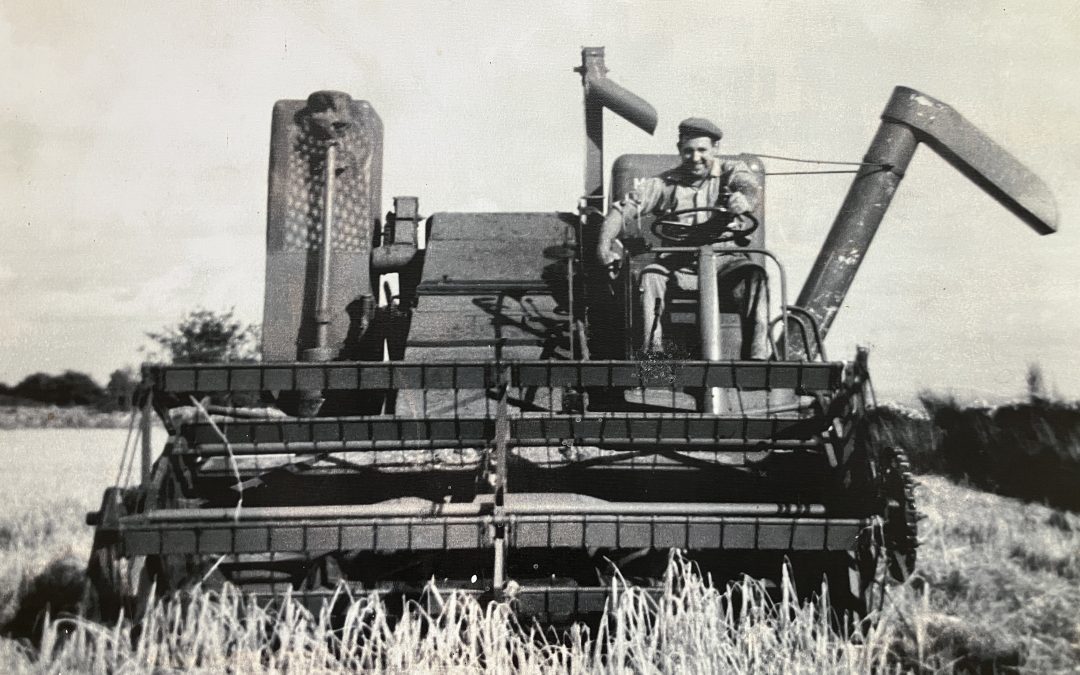Our beloved parish magazine, The Winsley Weaver, is celebrating its 50th year of circulation this year. They have asked my father, Richard, to contribute an article on the changes to our farming landscape over these years. This request reminded me of a similar article my late grandfather, Herbert Bowles (Bert to most, Pappy to us!), wrote before he passed away. I recently reread it and thought it was worth sharing again. Bert and his wife Jean were well known in the village and were a huge inspiration to us Bowleses. For those of you with a history or interest in the village or farming in years gone by, I thought you might enjoy this:
I was born in 1931, and like my father and grandfather, I have lived all my life here in Winsley. My grandfather, Abel, was a farmer at Parsonage Farm on the road to Conkwell, but his business fell victim to the farming recession in the mid-1800s. He then moved to Conkwell, working as a farmhand and raising his family of eight children.
My father, Herbert, started working in 1890 at the age of eleven, on a farm in Claverton on the A36. His journey to work took him through Warleigh and across the river on a ferry at Ferry Lane. The trip was so long that he was allowed to come home every other weekend!
His business career began in 1900 when he became the landlord of the Seven Stars here in the village. In those days, the village was a busy mining community, and his trade depended on the thirsty miners and the many small farms from the surrounding hamlets of Conkwell, Ashley, Haugh, and Turleigh. The bustling mine at Murhill was the main employer. When you visit the mine entrance, you can easily imagine the hive of industry and still see the route of the rail track that took the stone down to the canal. Apparently, the track was a loop, where the weight of the full trucks going down pulled the empty ones back up, and the only energy required was to operate the braking system. Once on the canal, the stone went all over the country. Just off Oxford Circus in London, you can find Winsley Street, which I understand is named after our village, where the stone to build the area was sourced.
As a child, I heard many stories of those days. My father brewed his own beer at the pub and sold his Best Ale for a halfpenny per pint, and the ordinary for a farthing. Apparently, the village policeman would do his rounds at 10:30 PM each evening, and a pint of Best was always left on the stone mounting block by the roadside to ensure there were no misunderstandings about closing times!
Local farmers would milk their cows in the morning, load the milk onto their horse carts, and rendezvous at a milk collection point in the village. From there, it was taken to the milk factory at Staverton. For most farmers, the only source of fresh water was at Turleigh Trows, so they would continue on there to refill their milk churns with water before returning to the farm for a day’s work. However, for some characters, a brief stop at the ‘Stars’ was too tempting! There, they would discuss the issues of the day, and the arguments would become more passionate with each pint. The journey home was navigated by the horse, and I was told it was not uncommon to find the farmer asleep under a hedge or stone wall around the lanes while the horse grazed the grass verges.
Just after the First World War, my father realized his ambition and left the pub to start farming at Church Farm. My early childhood memories were of life on the farm during the Second World War. I remember the anti-aircraft guns and searchlights in the fields on the road to Conkwell, the air raid warning sirens from Winsley Hospital (now Avon Park), and the prisoners of war working on the farm. There was a great community spirit despite the difficult times, and I remember the whole village school being sent to the farm at harvest time to help comb the fields for an ear of wheat or potato that was missed by the farmhands. The scarcity of food was on everyone’s minds, and I remember when a pig was ready for slaughter, the whole village seemed to know about it, and it became a community event on the farm. Everyone helped with the process in return for their rare pork supper.
The village center was the Church, Pub, and School (now the Social Club), and many trades were based at the Manor, where the local blacksmith and farrier worked. The Hospital site was also a large local employer as the nation struggled with the ravages of tuberculosis. The fields between the road and the hospital were market gardens, always full of gardeners producing food for the patients. Many local people worked on the site as gardeners and maintenance staff.
The village started to grow rapidly in the late 1940s when the area from King Alfred’s Way through to Dane Rise was built. It’s now hard to imagine that the small road leading to the Church Yard was once the main road to Conkwell and the access for lorries delivering to the farms. The building of the Tyning Road area in the early 70s and then the bypass completion in the 80s means the village is now much bigger than the one I grew up in. In those days, a strange face was a talking point, and a car passing through was the event of the day. However, as my grandson Tom now builds his business in the community, I can’t help but think that ideas like ‘localism’ and ‘carbon friendly’ are only new words to describe old ideas. Perhaps we are just going round in circles?
